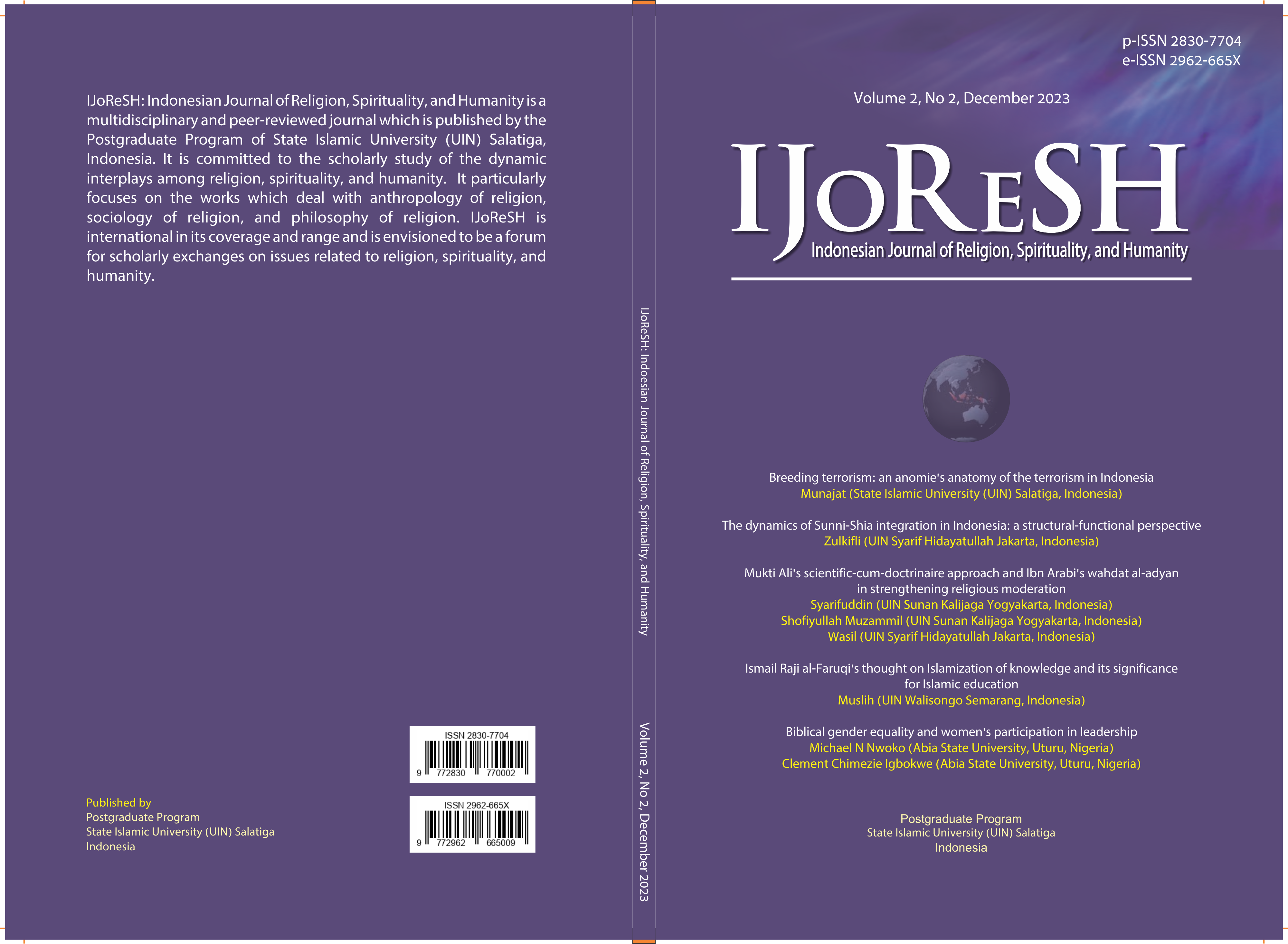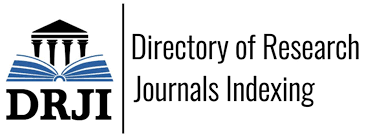Repurposed churches: an analysis through secularisation theory and the core-periphery model
DOI:
https://doi.org/10.18326/ijoresh.v3i2.126-151Keywords:
Closed churches, Secularisation theory, Church of England, Core-periphery modelAbstract
This study examines the repurposing of Anglican churches in the United Kingdom by integrating the core-periphery model developed by Friedmann and Krugman (UK) into secularisation theory, exploring how religious, cultural, and secular uses reflect broader social changes. With declining church attendance, many buildings are repurposed as homes, cultural monuments, or worship spaces for other faiths, such as free churches or mosques. The theory is tested by comparing several possible reuses for closed Anglican churches in the UK: conversion into homes, monuments, or mosques. The method utilised is a literature review, using data from local newspapers and reports by the Church of England and bodies responsible for monument protection. The result is a multi-dimensional approach similar to Wohlrab-Saar & Burchardt’s concept of multiple secularities, capable of assessing both the conversion of a sacred space into a profane space (a privatised or commercial actor, a public or a cultural space) and the transformation of a Christian/Anglican sacred space into a Muslim or free church sacred space. The findings indicate that many churches have been repurposed into homes and mosques, showing that market forces and individualisation have replaced religion and also revealing the emergence of diverse religious forms. This multidimensional approach suggests a pluralistic view of secularization, where secular and religious expressions co-exist and evolve in contemporary society.
References
Akomiah-Conteh, S. (2023). Possessing the Nations: Immigration and the Changing Landscape of the Church in Scotland. International Bulletin of Mission Research, 47(2), 191-203. https://doi.org/10.1177/23969393221124350
Beider, N. (2023). Religious residue: The impact of childhood religious socialization on the religiosity of nones in France, Germany, Great Britain, and Sweden. The British Journal of Sociology, 74(1), 50-69. https://doi.org/10.1111/1468-4446.12982
Bickley, P. & Mladin, N. (2020). Religious London. Faith in a Global City. Theos.
Bonnette, D. (2021). Church Redundancy: Changing Anglican Community and Belonging in Leicestershire and Lincolnshire, c. 1950–1995. Family & Community History, 24(2), 120-146. https://doi.org/10.1080/14631180.2021.1944517
Bonnette, D. (2023). Redundancy, Community and Heritage in the Modern Church of England, 1945-2000. Palgrave Macmillan & Springer.
Brown, C. (2001). The Death of Christian Britain: Understanding Secularisation 1800-2000. Routledge.
Casanova, J. (1994). Public religions in the modern world. University of Chicago press.
Casanova, J. (2006). Rethinking Secularization: A Global Comparative Perspective. The Hedgehog Review Spring & Summer, 7-22.
Casanova, J. (2007). Rethinking secularization: A global comparative perspective. In Religion, globalization, and culture (pp. 101-120). Brill. https://doi.org/10.1163/ej.9789004154070.i-608.39
Church Commissioners (2019). Mission and Pastoral Measure 2011. Church House.
Church of England (2021). Mission in Revision. A Review of the Mission and Pastoral Measure 2011. GS 2222.
Clements, B. (2014). The correlates of traditional religious beliefs in Britain. Journal of Beliefs & Values, 35(3), 278-290. https://doi.org/10.1080/13617672.2014.980070
Clements, B. & Gries, P. H. (2016). “religious nones” in the United Kingdom: How atheists and agnostics think about religion and politics. Politics and Religion, 10(1), 161-185. https://doi.org/10.1017/s175504831600078x
Crockett, A. & Voas, D. (2006). Generations of decline: religious change in 20th‐century Britain. Journal for the Scientific Study of Religion, 45(4), 567-584. https://doi.org/10.1111/j.1468-5906.2006.00328.x
Davie, G. (2015). Religion in Britain: a persistent paradox. Wiley Blackwell.
Davie, G. (2017). Religion in Public Life: Levelling the ground. Theos.
English Heritage (2010). New Uses for former places of worship. www.exeter.anglican.org
Ghosh, A. (2022). A Place Called Home: The Sense of Belonging of the Afghan Hindu and Sikh Diaspora in India. India Quarterly, 78(4), 654-670. https://doi.org/10.1177/09749284221128668
Goodhew, D. & Barward-Symmons, R. (2015). New Churches in the North East. Durham University.
Green, S. (2011). The Passing of Protestant England: Secularisation and Social Change c. 1920-1960. Cambridge University Press.
Halafoff, A., Weng, E., Banham, R., Barton, G., & Bouma, G. (2024). Migration and Religious Diversity. Religious Diversity in Australia: Living Well with Difference, 77.
Hassan, W. A (2015). The Mosque in Britain: British Heritage? Architectural Association School of Architecture.
Madge, N., & Hemming, P. J. (2017). Young British religious ‘nones’: findings from the Youth On Religion study. Journal of Youth Studies, 20(7), 872-888. https://doi.org/10.1080/13676261.2016.1273518
Mulkeen, A. (2020). Diocesan Rationale for Closures: 2010-2019. Church House.
Norris, P., & Inglehart, R. (2011). Sacred and secular: Religion and politics worldwide. Cambridge University Press.
Norris, P., & Inglehart, R. F. (2012). Muslim integration into Western cultures: Between origins and destinations. Political Studies, 60(2), 228-251. https://doi.org/10.1111/j.1467-9248.2012.00951.x
Power, A., Hall, E., Kaley, A., & Macpherson, H. (2021). Voluntary support in a post-welfare state: Experiences and challenges of precarity. Geoforum, 125, 87-95. https://doi.org/10.1016/j.geoforum.2021.07.003
Sidoroinicz, C. (2020). The re-use of closed churches: An analysis of use types and sustainability from 1969-2019. Church House.
Sherkat, D. E. (2020). Cognitive sophistication, religion, and the trump vote. Social Science Quarterly, 102(1), 179-197. https://doi.org/10.1111/ssqu.12906
Twenge, J. M., Sherman, R. A., Exline, J. J., & Grubbs, J. B. (2016). Declines in American adults’ religious participation and beliefs, 1972-2014. Sage Open, 6(1). https://doi.org/10.1177/2158244016638133
Ubasart-González, G., & Minteguiaga, A. M. (2022). State transformations and welfare models: the significance of the return of public institutions in Ecuador of the Citizen Revolution (2007–2017). International Journal of Sociology and Social Policy, 42(1/2), 23-41. https://doi.org/10.1108/IJSSP-10-2020-0484
Voas, D. & Crockett, A. (2005). Religion in britain: neither believing nor belonging. Sociology, 39(1), 11-28. https://doi.org/10.1177/0038038505048998
Voas, D. & McAndrew, S. (2012). Three Puzzles of Non-Religion in Britain. Journal of Contemporary Religion, 27(1), 29-48.
Woodhead, L. & Catto, R. (2012). Religion and Change in Modern Britain. Routledge.
Woodhead, L. (2016). The rise of ‘no religion’in Britain: The emergence of a new cultural majority. Journal of the British Academy, 4(1), 245-261. https://doi.org/10.5871/jba/004.245
Downloads
Published
How to Cite
Issue
Section
License
Copyright (c) 2024 Maria Grazia Pettersson

This work is licensed under a Creative Commons Attribution-ShareAlike 4.0 International License.
Copyright
Authors who publish with Indonesian Journal of Religion, Spirituality, and Humanity agree to the following terms:
- Authors retain copyright and grant the journal right of first publication with the work simultaneously licensed under a Creative Commons Attribution License (CC BY-SA 4.0)that allows others to share the work with an acknowledgement of the work's authorship and initial publication in this journal.
- Authors have the right to enter into separate, additional contractual arrangements for the non-exclusive distribution of the journal's published version of the work (e.g., post it to an institutional repository or publish it in a book), with an acknowledgment of its initial publication in this journal.
- Authors are permitted and encouraged to post their work online (e.g., in institutional repositories or on their website) prior to and during the submission process, as it can lead to productive exchanges, as well as earlier and greater citation of published work.
Licensing
This work is licensed under a Creative Commons Attribution-ShareAlike 4.0 International License.








